We’ve been thinking about upgrading our batteries and solar for a while, as the stock system provided by Airstream is pretty wimpy. Our goals were enough battery for 1-2 hours of air conditioning (we don’t want to roast the birds while we’re engaged in extra-vehicular activities) and for breakfast (a couple of cups of Keurig coffee and warming something in the microwave). Since we live in PA, which isn’t optimal for solar, and we drive more than we sit, we also wanted the ability to do some battery charging from the alternator.
We knew we needed to talk to Lew Farber of Solar Tech Energy Systems. He proposed a package with 300-400 watts of solar panels and 320 amp hours of lithium batteries. He also suggested some useful options: an inside LP switch, a King Jack (TV) antenna, additional USB ports, and a WeBoost cell booster. Yes, please!
Lew estimated 7-10 days and we made our way to Naples to get started. We rented a house for the duration and emptied the contents into the garage except for a few items. It hadn’t been in this state since it was new!
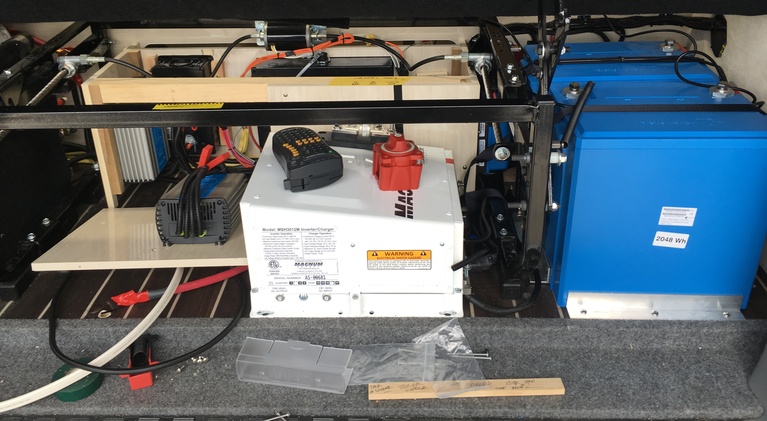
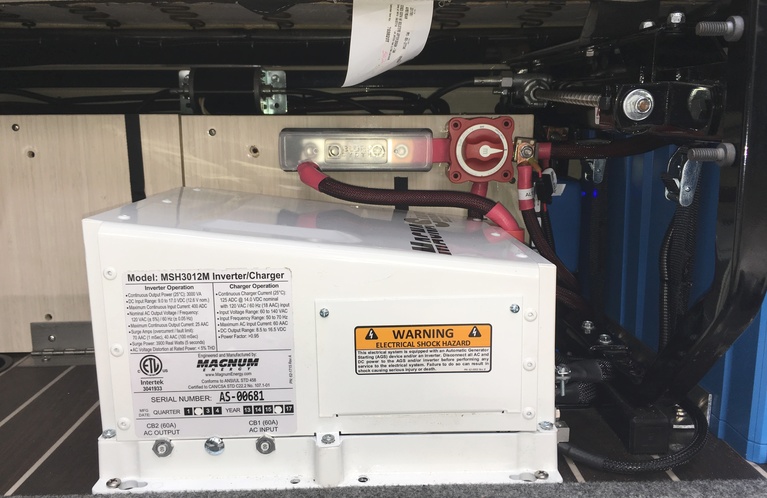
All of the new pieces were going to go under the rear lounge. In a Class B van that’s where you have the most space. The first photo is on day 2. The original parts are gone and much of the new is mounted or at least in place to be mounted. The most obvious items are the big blue Victron LiFePO4 (Lithium Iron Phosphate) batteries. The second photo shows the new inverter mounted and wired in several days later. The new Magnum hybrid inverter allows charging from multiple sources (shore power, solar and the alternator). It also will allow us to combine multiple sources to power the loads. For example, let’s say we’re plugged into a 15A circuit when visiting family and we need to run the air conditioner. We can tell the inverter that we only want to use 10 amps of shore power and use the batteries for the rest. We don’t overload our guest and we don’t quickly draw down our batteries. Similarly, on the road we can run the roof a/c with battery plus alternator input.
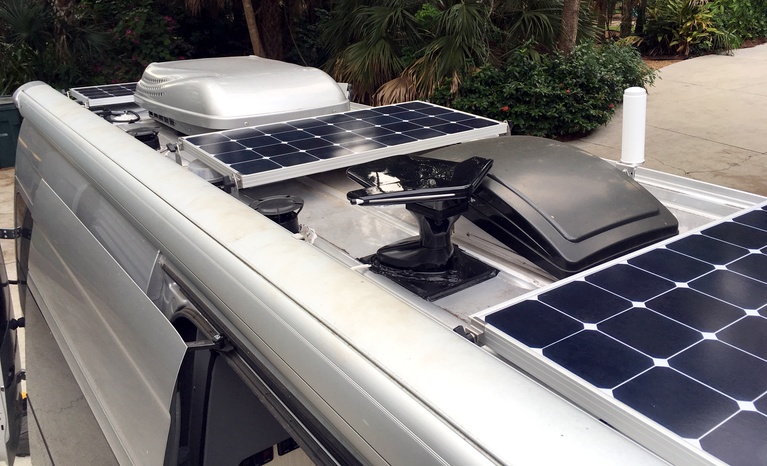
On the roof you can see the three new 100W solar panels. (Four panels wouldn’t quite fit.) The Jack antenna is mounted on the right side of the fan and the new SureCall antenna (the cylindrical white tower) is mounted on the other side.
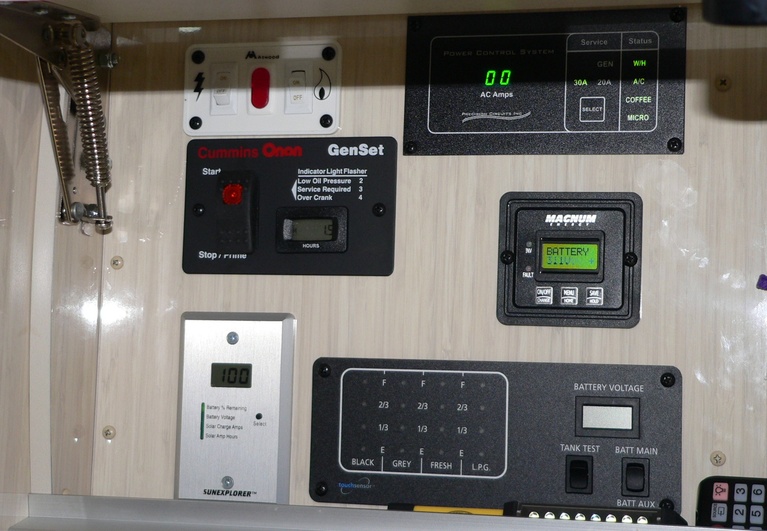
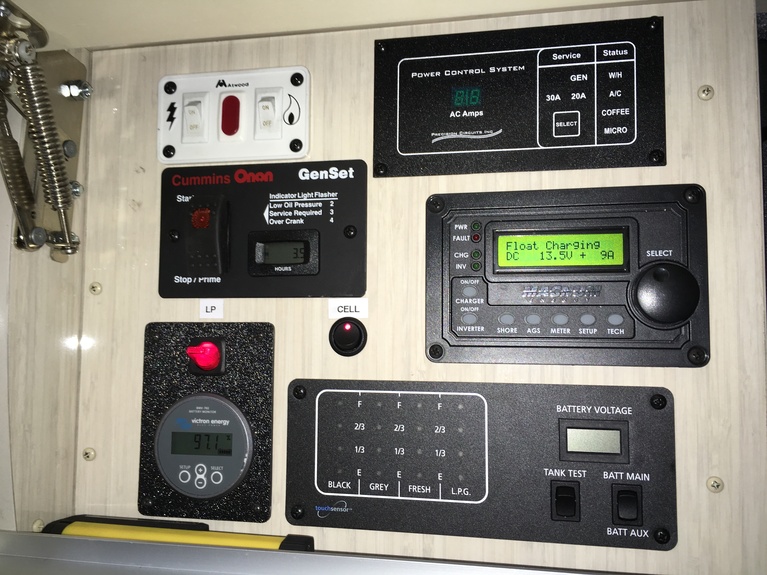
The next photos show the old and new monitor panels. New features are a different magnum remote and solar charger display, a switch for the cell booster and the inside LP tank switch. On the side of the panel (not shown) are 6 new USB ports. We’ll use the rest of the cabinet for storing and charging electronics.
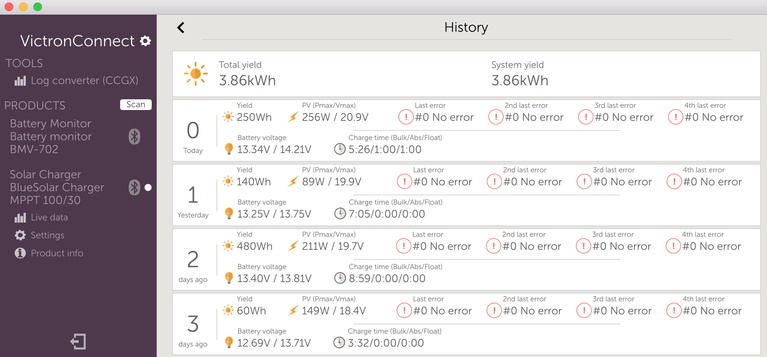
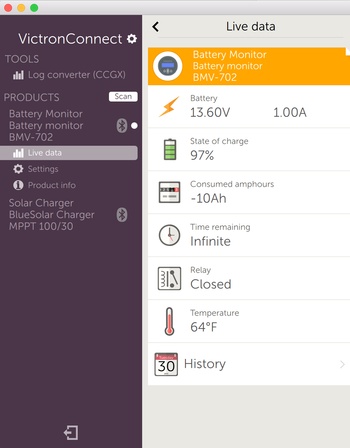
You can get all the information you need from the new panels or you can use bluetooth connected devices to talk to the solar charger and battery monitor. Yes, that is much better than flipping through the displays on the panels. No, we wouldn’t go back to the old way. We get live status information as well as a thirty-day history for both battery state and solar charging. It provides an estimate of time remaining before recharge, which at one point said “infinite”. (Now, why did we need those solar panels?) And since we spend considerable time in colder climates, it also gives us a way to monitor internal battery temperature. Lithium batteries can be used down to about -4 degrees but they can’t be charged below about 34 degrees. Charging sources have to be disconnected if the temperature goes below that, which we will do using switches.
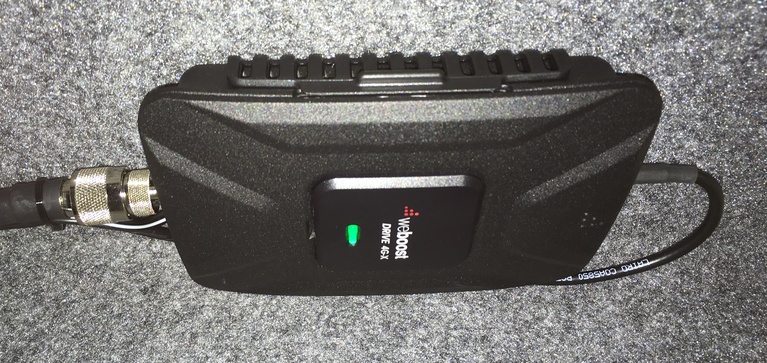
We’ve been thinking of upgrading to a new cell booster to replace our Wilson Sleek for some time as well. The Sleek can only handle one device at a time and that device basically had to be in physical contact while in use. The new Drive 4GX is much more powerful and allows us to use all of our cellular devices at the same time. Lew mounted it on the roof of the cabinet next to the monitor panels.
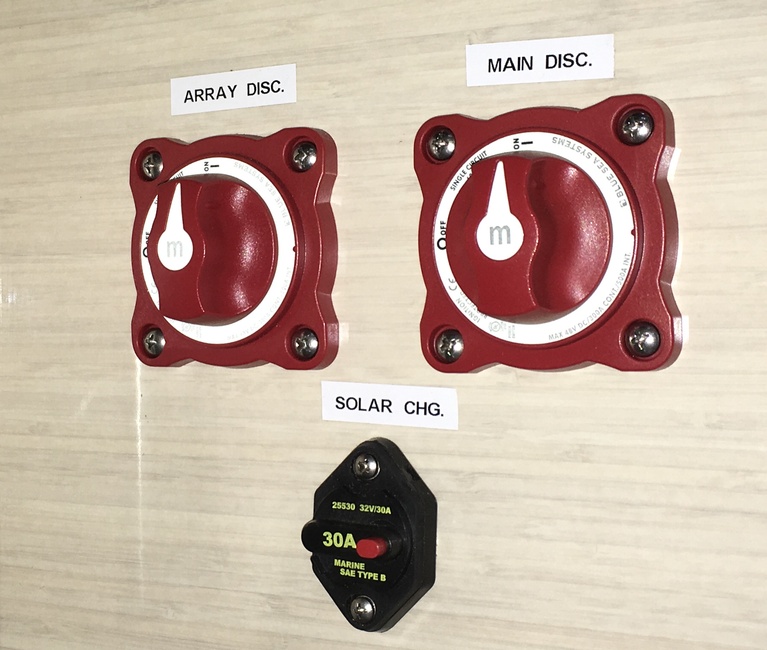
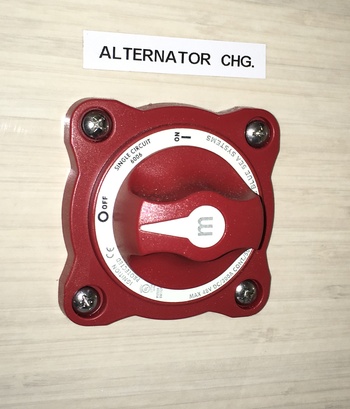
The last photos show the main disconnects for the solar array and charger and the alternator charging switch mounted below the rear lounge seat.
Lew was a dream to work with and everything is neat and clean. Overall, we are thrilled! To date, we’ve tested all systems but haven’t used them a lot, because all the Florida State Parks we’ve visited since provide electric hookups at all sites.